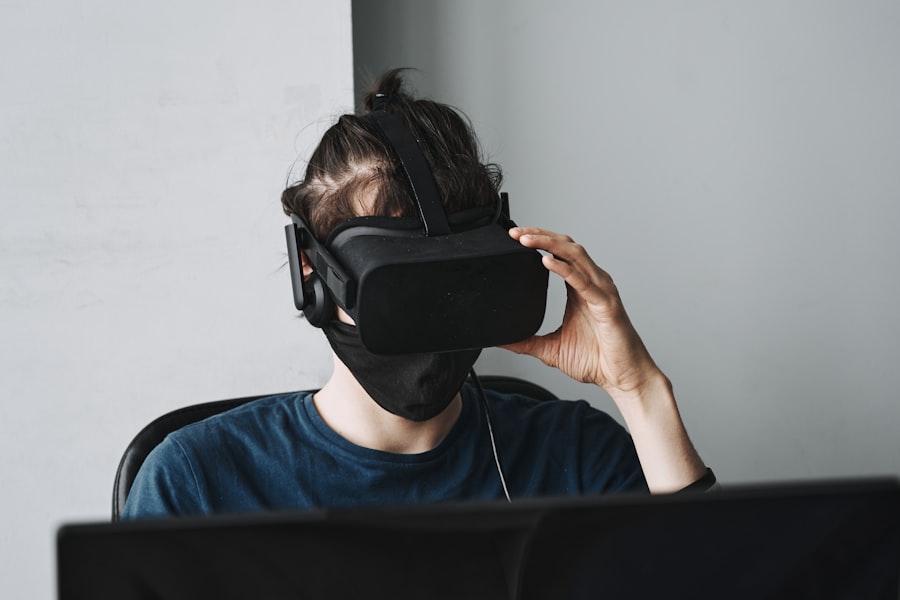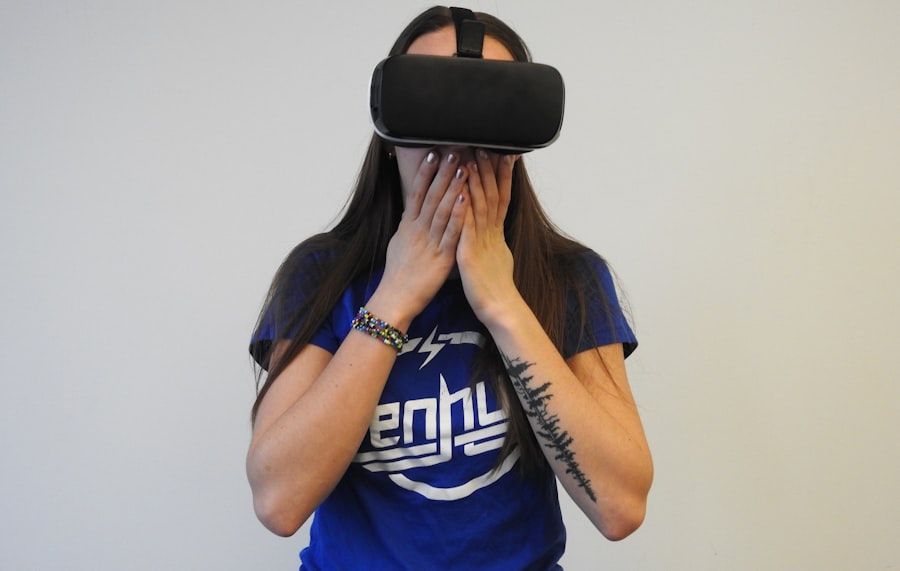Download links
How to install Exploring the Virtual Life: A New Way to Experience the World APK?
1. Tap the downloaded Exploring the Virtual Life: A New Way to Experience the World APK file.
2. Touch install.
3. Follow the steps on the screen.
Description
The evolution of virtual reality (VR) technology has been nothing short of remarkable, transforming from a niche concept into a mainstream phenomenon. Initially, VR was primarily associated with gaming and entertainment, but its applications have expanded significantly across various sectors. The advent of more sophisticated hardware, such as headsets with high-resolution displays and advanced motion tracking, has played a pivotal role in this transformation.
Companies like Oculus, HTC, and Sony have invested heavily in developing consumer-friendly VR devices that offer immersive experiences, making the technology accessible to a broader audience. The introduction of standalone headsets, which do not require a powerful PC or console to operate, has further democratized access to VR.
From immersive gaming experiences to virtual art galleries and educational simulations, the content available in VR is continually expanding. This growth is supported by advancements in graphics processing and artificial intelligence, which enhance the realism and interactivity of virtual environments. As a result, VR is no longer confined to the realm of entertainment; it is increasingly being recognized as a valuable tool for various industries, including healthcare, real estate, and tourism.
The convergence of these technological advancements has set the stage for a future where virtual reality becomes an integral part of everyday life.
Key Takeaways
- Virtual reality technology has seen a significant rise in popularity and accessibility in recent years, with advancements in hardware and software driving its widespread adoption.
- Virtual travel and exploration allow users to visit and experience new places and environments from the comfort of their own homes, offering a new way to satisfy their wanderlust.
- Virtual social interactions and communities provide a platform for people to connect and engage with others in immersive and interactive virtual environments, fostering new forms of social interaction.
- Virtual reality is increasingly being used in education and training to create realistic and engaging learning experiences, allowing students and professionals to practice and learn in a safe and controlled environment.
- The impact of virtual reality on mental health is being explored, with potential applications in therapy, relaxation, and exposure treatments, offering new ways to address mental health challenges.
Virtual Travel and Exploration
Virtual travel has emerged as one of the most compelling applications of VR technology, allowing users to explore distant locations without leaving their homes. This innovation has gained particular relevance in recent years, especially during periods when physical travel was restricted due to global events such as the COVID-19 pandemic. Virtual reality travel experiences can transport users to iconic landmarks, natural wonders, and cultural sites around the world.
For instance, platforms like Google Earth VR enable users to soar over the Grand Canyon or stroll through the streets of Paris, providing a sense of presence that traditional media cannot replicate. The benefits of virtual travel extend beyond mere entertainment; they also offer educational opportunities and cultural enrichment. Museums and historical sites have begun to create virtual tours that allow individuals to engage with art and history in an interactive manner.
The British Museum, for example, offers a virtual tour that showcases its vast collection while providing contextual information about each exhibit. This not only makes cultural education more accessible but also encourages curiosity and exploration among users who may not have the means or opportunity to visit these places in person. Furthermore, virtual travel can serve as a powerful tool for promoting tourism by allowing potential visitors to experience a destination before making travel plans.
Virtual Social Interactions and Communities

As social beings, humans have an innate desire to connect with others, and virtual reality has opened new avenues for social interaction that transcend geographical boundaries. VR platforms such as VRChat and AltspaceVR provide immersive environments where users can meet, socialize, and collaborate in real-time. These platforms allow individuals to create personalized avatars and engage in activities ranging from casual conversations to organized events like concerts and game nights.
The sense of presence in these virtual spaces fosters a feeling of community that can be particularly beneficial for those who may feel isolated in their physical lives. The rise of virtual social interactions has also given birth to new forms of community engagement. For instance, support groups for individuals facing similar challenges—such as mental health issues or chronic illnesses—can now convene in virtual spaces where participants can share experiences and offer support without the barriers of distance or stigma.
Additionally, VR has been utilized for team-building exercises in corporate settings, allowing remote employees to collaborate in a shared virtual environment. This shift towards virtual socialization reflects a broader trend in society where digital interactions are becoming increasingly normalized, highlighting the potential for VR to enhance human connection in innovative ways.
Virtual Reality in Education and Training
| Metrics | Statistics |
|---|---|
| Number of educational institutions using VR | 5000+ |
| Percentage of students who prefer VR learning | 75% |
| Effectiveness of VR in skill retention | up to 80% |
| Reduction in training time with VR | up to 40% |
| Cost savings with VR training | up to 60% |
The application of virtual reality in education and training is revolutionizing how knowledge is imparted and skills are developed. Traditional educational methods often struggle to engage students fully; however, VR offers an interactive learning experience that can captivate learners’ attention. For example, medical students can practice surgical procedures in a risk-free environment using VR simulations that replicate real-life scenarios.
This hands-on approach not only enhances skill acquisition but also builds confidence before students enter actual operating rooms. In addition to vocational training, VR is being integrated into K-12 education to create immersive learning experiences across various subjects. History lessons can come alive as students virtually visit ancient civilizations or witness historical events firsthand.
Science classes can benefit from virtual labs where students conduct experiments without the constraints of physical materials or safety concerns. The adaptability of VR allows educators to tailor experiences to different learning styles, making education more inclusive and effective. As educational institutions continue to embrace this technology, the potential for VR to transform learning outcomes becomes increasingly evident.
The Impact of Virtual Reality on Mental Health
The intersection of virtual reality and mental health is an area of growing interest among researchers and practitioners alike. VR has shown promise as a therapeutic tool for various mental health conditions, including anxiety disorders, PTSD, and phobias. Exposure therapy, which involves gradually exposing patients to their fears in a controlled environment, can be effectively conducted using VR technology.
For instance, individuals with a fear of heights can experience simulated heights in a safe setting, allowing them to confront their fears without real-world consequences. Moreover, VR can facilitate mindfulness and relaxation techniques that promote mental well-being. Applications designed for meditation and stress relief often utilize calming virtual environments—such as serene beaches or tranquil forests—to help users escape from their daily stressors.
These immersive experiences can enhance relaxation practices by engaging multiple senses and creating a sense of presence that traditional methods may lack. As mental health awareness continues to grow, the integration of VR into therapeutic practices offers exciting possibilities for improving treatment outcomes and enhancing overall well-being.
The Future of Virtual Reality and Its Potential Applications

Looking ahead, the future of virtual reality holds immense potential across various domains. As technology continues to advance, we can expect even more sophisticated hardware and software solutions that enhance user experiences. The integration of artificial intelligence into VR environments could lead to personalized experiences tailored to individual preferences and needs.
For instance, AI-driven avatars could adapt their behavior based on user interactions, creating more dynamic social experiences. Furthermore, the potential applications of VR extend beyond entertainment and education into fields such as architecture, real estate, and even therapy for physical rehabilitation. Architects can use VR to create immersive walkthroughs of buildings before they are constructed, allowing clients to visualize spaces in ways that traditional blueprints cannot achieve.
In real estate, potential buyers can take virtual tours of properties from anywhere in the world, streamlining the home-buying process. As industries continue to explore the possibilities offered by virtual reality technology, it is clear that its impact will be profound and far-reaching. The convergence of VR with other emerging technologies—such as augmented reality (AR) and mixed reality (MR)—will likely lead to even more innovative applications that blur the lines between the physical and digital worlds.
As we stand on the brink of this technological revolution, it is essential to consider both the opportunities and challenges that come with integrating virtual reality into our daily lives.

Facebook comments